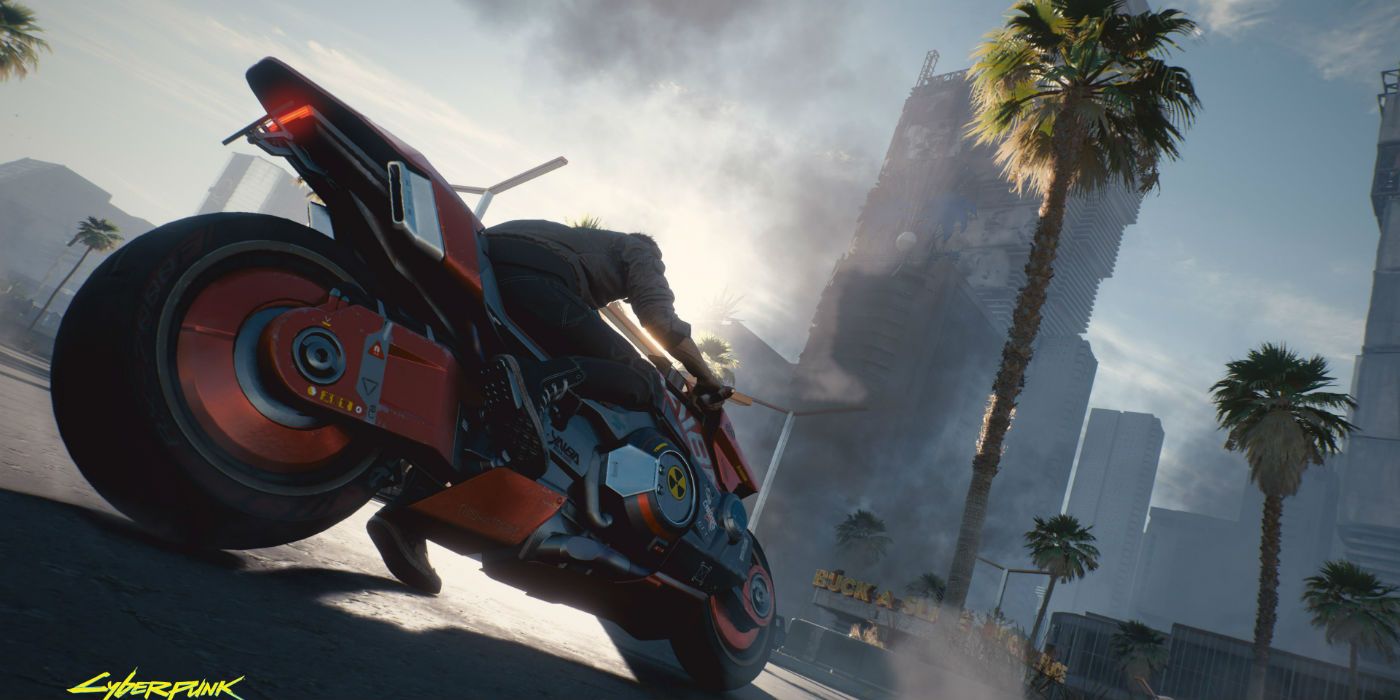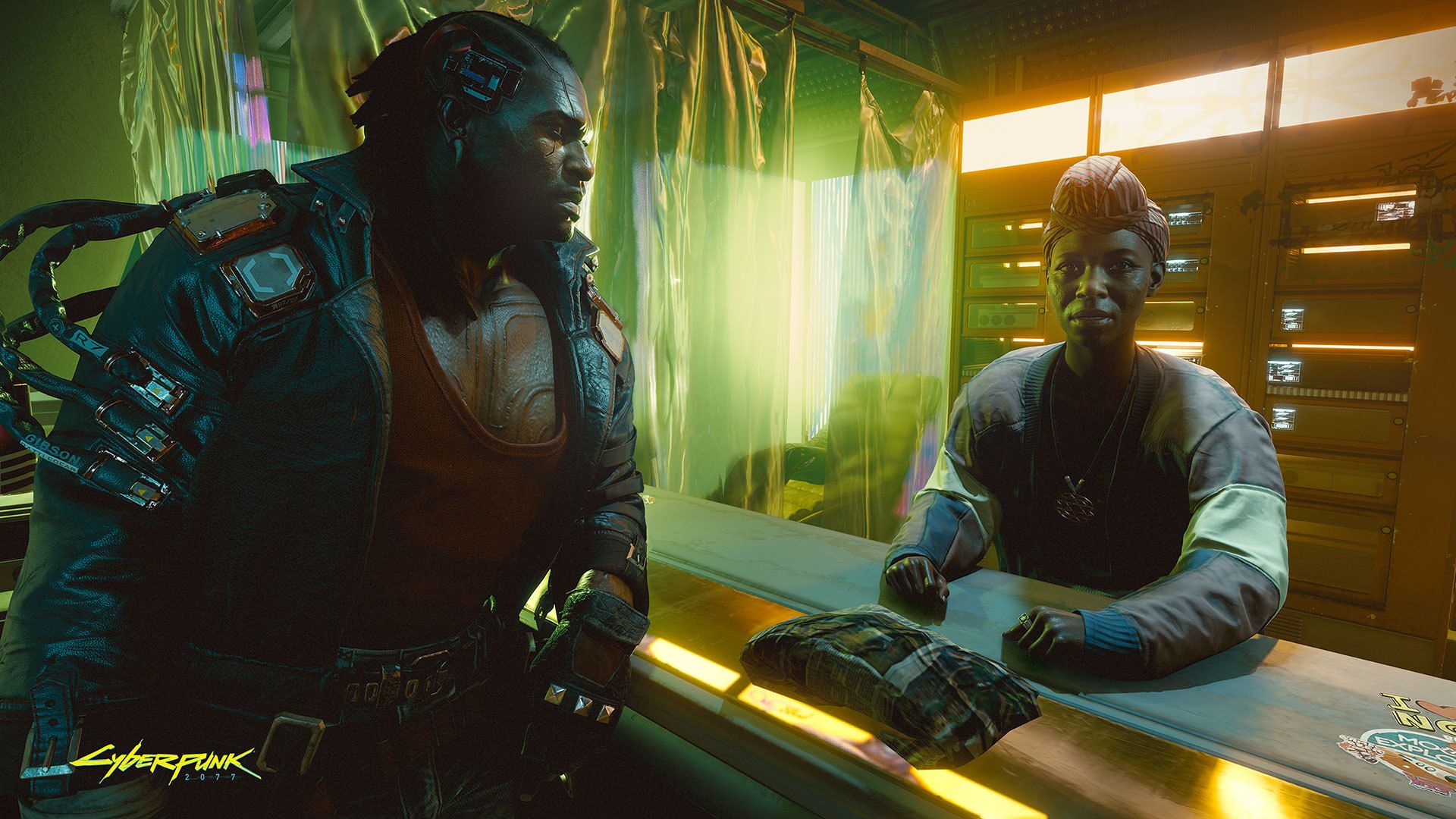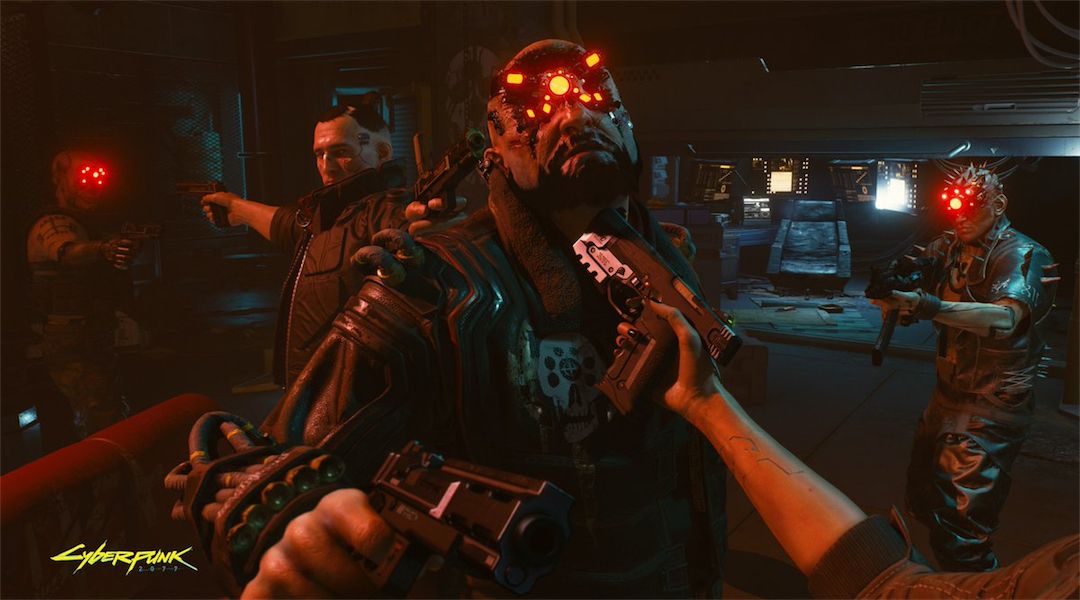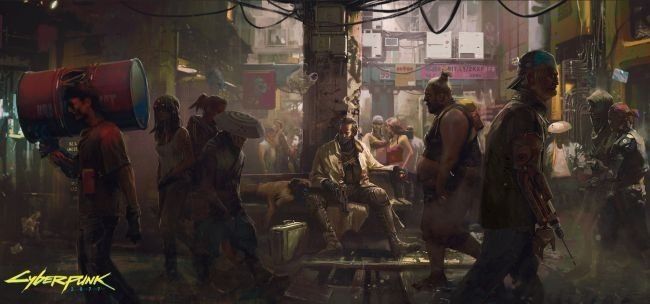Cyberpunk 2077's Night City Explained | Game Rant

While Cyberpunk 2077 has been delayed until September of this year, fans can still enjoy a swath of rich lore and history for which the game is built upon. Many fans may not yet know, but Cyberpunk 2077 is built upon the pen and paper RPG series, Cyberpunk, specifically Cyberpunk 2013 and its sequel, Cyberpunk 2020.
Though Cyberpunk 2077 takes place over 50 years after the alternate-historical setting of Cyberpunk 2020, in the year 2020, it still keeps intact its rich history and attachment to the overall universe, especially Night City, where the game will take place. While a lot can change in over fifty years, Night City's historical timeline prior to and leading up to the year of 2020 can still paint a vivid world for the future thereafter in Cyberpunk 2077, much of which is still relevant in the year 2077.
Furthermore, the latest version of the pen and paper RPG, Cyberpunk Red, can help provide more insight to fill the historical gaps, as it takes place in the year 2045.
Night City is a coastal city in the Free State of Northern California. To understand this context fully, the Free State of Northern California is an autonomous region of the United States, located in North California, and Night City is what became of Morro Bay. In the year 2077, Night City was voted "the worst place to live in America."
This may partly be due to the fact that the city receives around 21 inches of rainfall per year, and this water contains toxic chemicals that are much higher than the current government standards which are set. It is recommended that residents and visitors to Night City carry a filter mask and supplemental oxygen on them in case of the sudden presence of inversion smogs, and as well as acid rain fog.
Free States, though very independent and autonomous in their own right, are still part of the Union of the USA, but they can ignore federal laws and replace them with their own laws in most cases.

In the world of Cyberpunk, Free States first existed after Texas declared itself free after the federal government's attempted arms control there. Alaska was next, then third was California. The Free State of Northern California split from the rest of California, creating two Free States of California, consisting of north and south. Night City is just north of this border.
Night City's city council is comprised from representatives of the top ten largest Corporations in Night City, essentially meaning that it is a corporate-controlled council. It is not currently known yet who the mayor(s) may be in Cyberpunk 2077, as a lot has probably changed since the alternate-history of the year 2020, when corporate puppet Richard Night led the city. But it is important to understand that while other cities, such as New York, have been taken over by corporations, Night City is unique in that it was built and established by Corporations from the ground-up.
In the alternate-history of Cyberpunk, Night City was originally founded by Richard Night in 1994 as a planned urban community. It is a technologically advanced city, and at least in its founding years, it was known as "The City on the Edge of Tomorrow", with 9 million tourists having visited it every year.
Night envisioned a city that would be free from crime and poverty, but also saw to it that oversight of unethical work and such laws that enforced it, were non-existent, veering the original plans off-course into something resembling a more dystopian setting. After the death of Richard Night in 1998, street wars and turf battles ensued over control of the city between Cyberpunk's local mobs and Corporations.
By 2005, mobs controlled both the city infrastructure and the corporations. After this point, Night City became worn down in violence and gang wars, and the original corporate infrastructure had little influence left, nor any interest in trying to fix the matter. Years later, the original Corporate leadership, figureheads and parties took back control of the city with the assistance of Arasaka paramilitary forces, which are often contracted law enforcement players can also will fight against in Cyberpunk 2077.
This time, the corporations ensured that history would not repeat itself by installing their own puppets into the local government, but still could not fully grapple the homelessness, violence and dystopian setting the city had been engulfed in, which became the new status quo of a Cyberpunk setting entrenched in moral decay.
Jump ahead to the year 2077, and Night City appears to be a technologically advanced dystopia still ruled by mega-corporations. On the outskirts of the city, there exists the hostile Badlands, where fauna is nearly extinct and the scavenger Nomad factions of the Aldecados and Wraights wage a low-scale war with each other over dominance in this region.
In the Cyberpunk universe, these Nomads in the Badlands used to be corporate wage-slaves who were fired and blackballed from further employment opportunities, joining motor-gangs and developing strong tribal kinship with one another. While not much is yet known about the Aldecados and Wraights, the latter are more hostile to outsiders and exclusive to their own tribal network. They will probably be the more clearly-cut enemies in this area of the Cyberpunk 2077 video game.

Within the city proper limits, there are six different unique districts where players can conduct Cyberpunk 2077 quests. The city center is the commercial hub, with tall skyscrapers and offices of the corporations that rule the city.
Watson is another district, its demographics consisting of many Asian ethnic groups and other immigrants living in buildings no longer owned by corporations. Westbrook District, also known as Japantown, is home to many of the city's wealthy elites who have likely found much success and are the benefactors of the political, economic and corporate status quo.
Heywood, though wealthy in its own right, has a growing gang problem, while Pacifica district is a gang-infested slum that sees little wealth. Finally, Santo Domingo is the industrial district where much of the traditional working class residents reside.
Night City's main industries are technology research, light industry, international trade, various information-technology industries, and, of course, security service and advanced technology that is relevant to the security industry. At least in Night City's founding, a few known MegaCorporations maintained especially significant influence and power over the city. It is unclear if this is still the case in the year 2077, but for what it is worth, some of these MegaCorporations include Arasaka, Militech, Orbital Air, Petrochem and EBM.
Arasaka, founded in the early 1900's in Tokyo, Japan, is invested in the security field, providing armed security for many corporations, local businesses and influential figureheads. Their security guards are highly trained individuals that go through a rigorous training program in northern Japan, though clients can choose security personal that are fluent in different languages of their choice, and come equipped with different tiers of Cyberpunk's high tech equipment and technology.

In many circumstances, Arasaka security personnel are also sub-contracted by the Police to enforce security in the streets of Night City. Militech International Armaments specializes in the manufacturing of weapons and is the largest of its type in the world.
They provide high-tech equipment and technology to hundreds of nations and various mercenary divisions, including those that exist underground or on Cyberpunk's corrupt black market offering lucrative services. Orbital Air is highly invested in orbital technology, French-made space planes and have a monopoly over orbital lifting technology, which sounds as if it includes the transportation of large or heavy equipment and cargo throughout the world.
Petrochem Associates International is invested heavily in the petrochemical industry, producing the synethetic alcohol fuel known as CHOOH2, which is the main type of fuel used in the 21st century of Cyberpunk's universe. Finally, EBM, or Euro Business Machines, is responsible for the development and manufacturing of computers and high-tech equipment all over the world.
In preparing for the launch of Cyberpunk 2077 in September, players can enjoy near-endless exposure to this universe's lore and history, and even Cyberpunk's religious ideologies, from the pen and paper RPG series. Though, the pen and paper RPG series did create a sequel to Cyberpunk 2020, known as V 3.0, which could hint at some of the history that transpired between the year 2020 and the video game's 2077 setting, it should be taken with a grain of salt given that V 3.0 is mostly considered retired and obsolete.

To better fill the gap in history, fans would best be advised to delve into Cyberpunk Red, the latest edition of the pen and paper RPG which was result in August, 2019, and takes place just three decades before the video game begins. Even for those with no interest in playing the actual game, the Cyberpunk Red Jumpstart Kit provides plenty of insight, history and lore of the history to better understand Cyberpunk 2077's expansive universe.
Finally, if one can get their hands on it, there is also a Night City Sourcebook which can accompany the pen and paper RPG Cyberpunk 2020. Again, despite being from a past long-gone in the Cyberpunk historical timeline, it may be one of the most insightful Cyberpunk source books for those wishing to obtain an even deeper look at the origins into the decrepit and crowded landscape of Cyberpunk 2077's Night City.
Cyberpunk 2077 is currently in development and set for release on September 17, 2020 on Stadia, PS4, Xbox One and PC.

Post a Comment